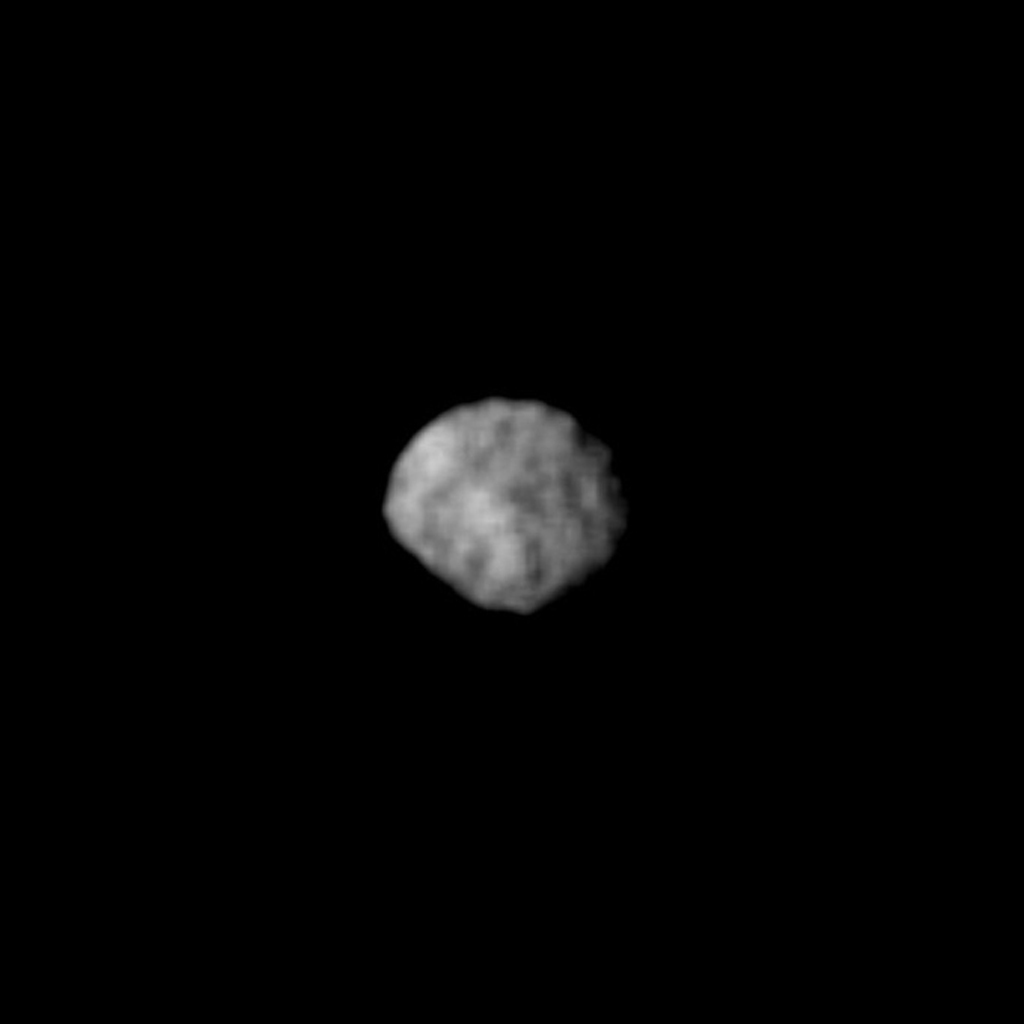Larissa, a moon of Neptune
45,701 miles
121 miles
Larissa is a small moon of Neptune. It is one of Neptune's inner moons and is the fifth moon from the planet. Larissa has a diameter of approximately 194 kilometres (121 miles) and is the fourth largest moon of Neptune. It travels around Neptune in a nearly circular orbit at a distance of about 73,500 kilometres (45,700 miles). A length of an orbit takes 13 hours which means that it orbits Neptune faster than the planet spins.
Larissa is believed to be a pile of rubble made up of the fragments of an earlier moon that was destroyed when Neptune captured its largest moon Triton. Parts of that destroyed moon joined back together to form Larissa and some of Neptune's other inner moons.
Larissa is classed as a regular prograde moon. Regular moons are moons that formed out of materials spinning around a planet. Irregular moons are ones that were captured by a planet. A prograde moon is one which orbits in the same direction of the rotation of its host planet.
In Greek mythology, Larissa is a nymph from Thessaly, a daughter of Pelasgus. She was a lover of the god of the sea, Poseidon. Poseidon is the Greek equivalent of the Roman god Neptune. Larissa and Poseidon had three sons. Achaios, Phthios and Pelasgus. In modern-day Greece, Larissa is the capital city in the Thessaly region.
As Neptune is the Roman god of the sea, all of its moons have water-related names.
Before it received its official name by the International Astronomical Union on 16th September 1991, Larissa was identified as S/1981 N1, S/1989 N 2. It is sometimes referred to as Neptune VII.






